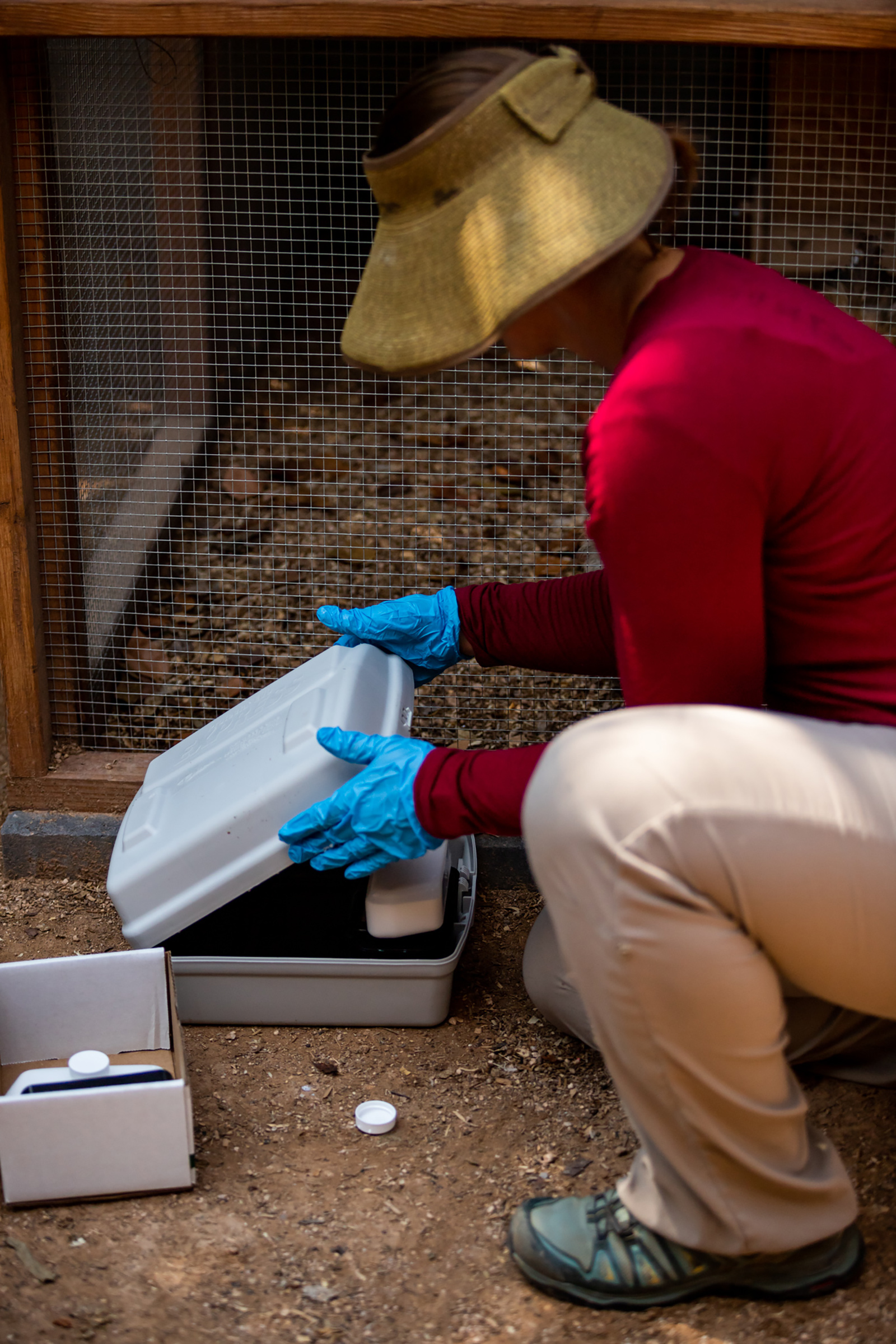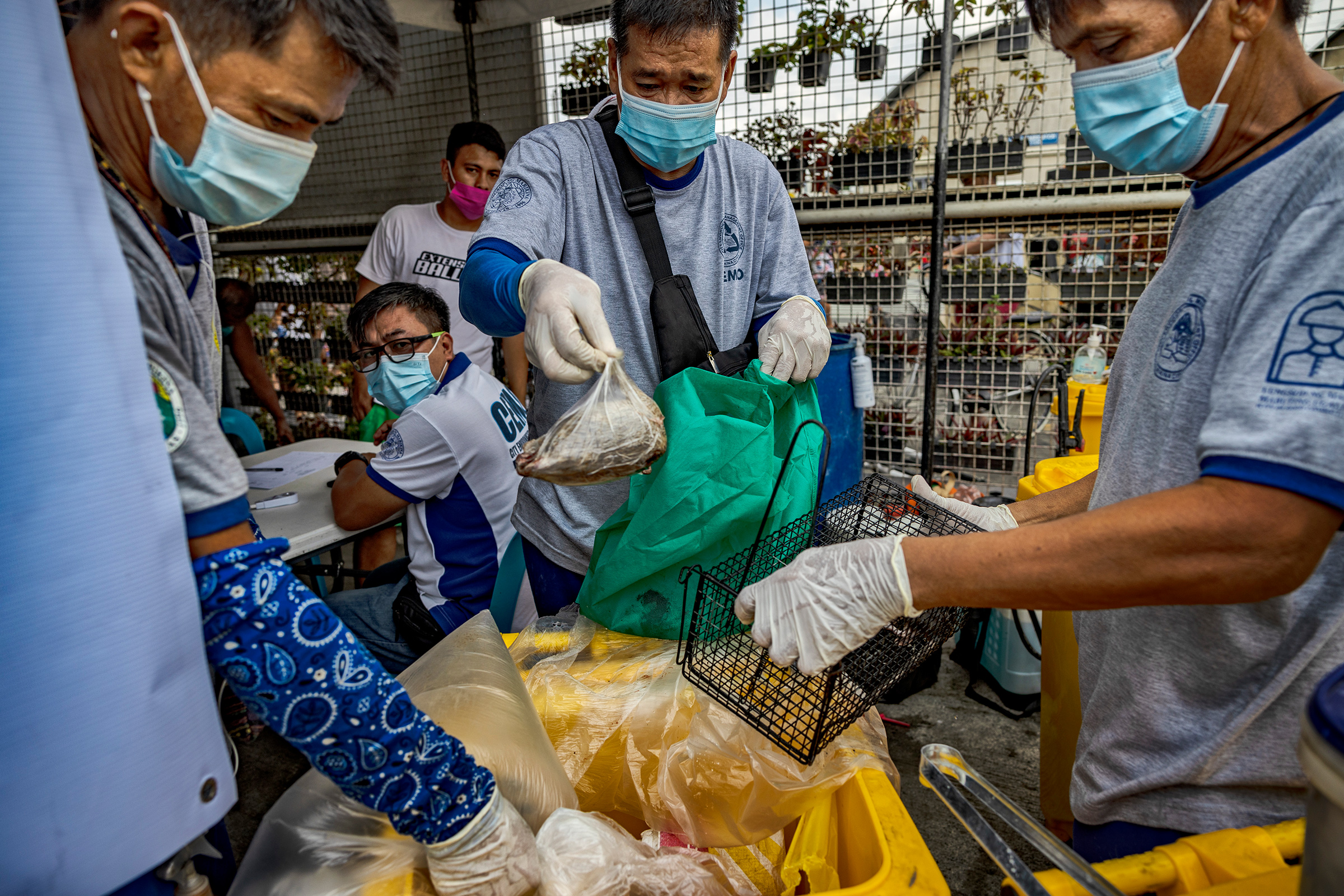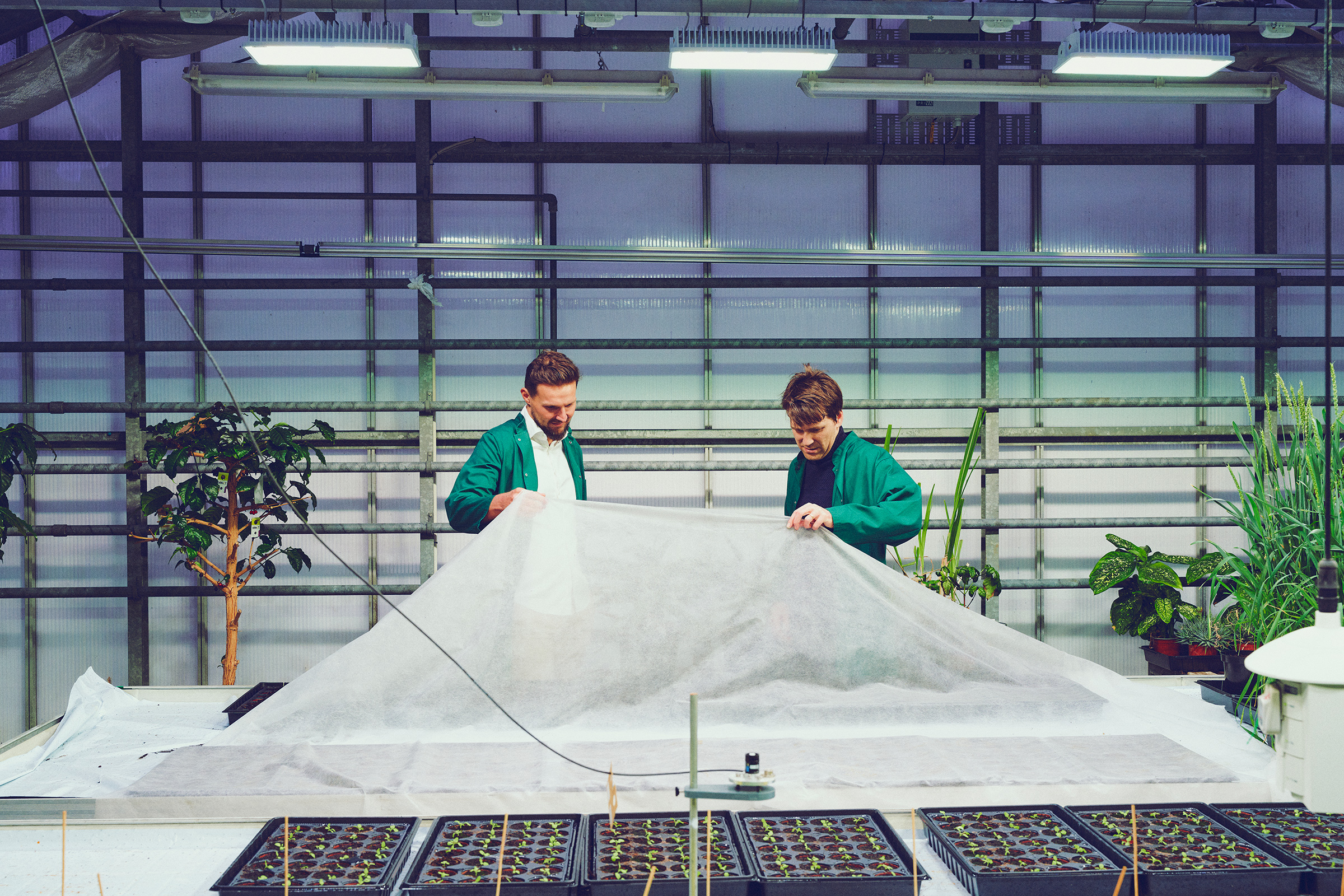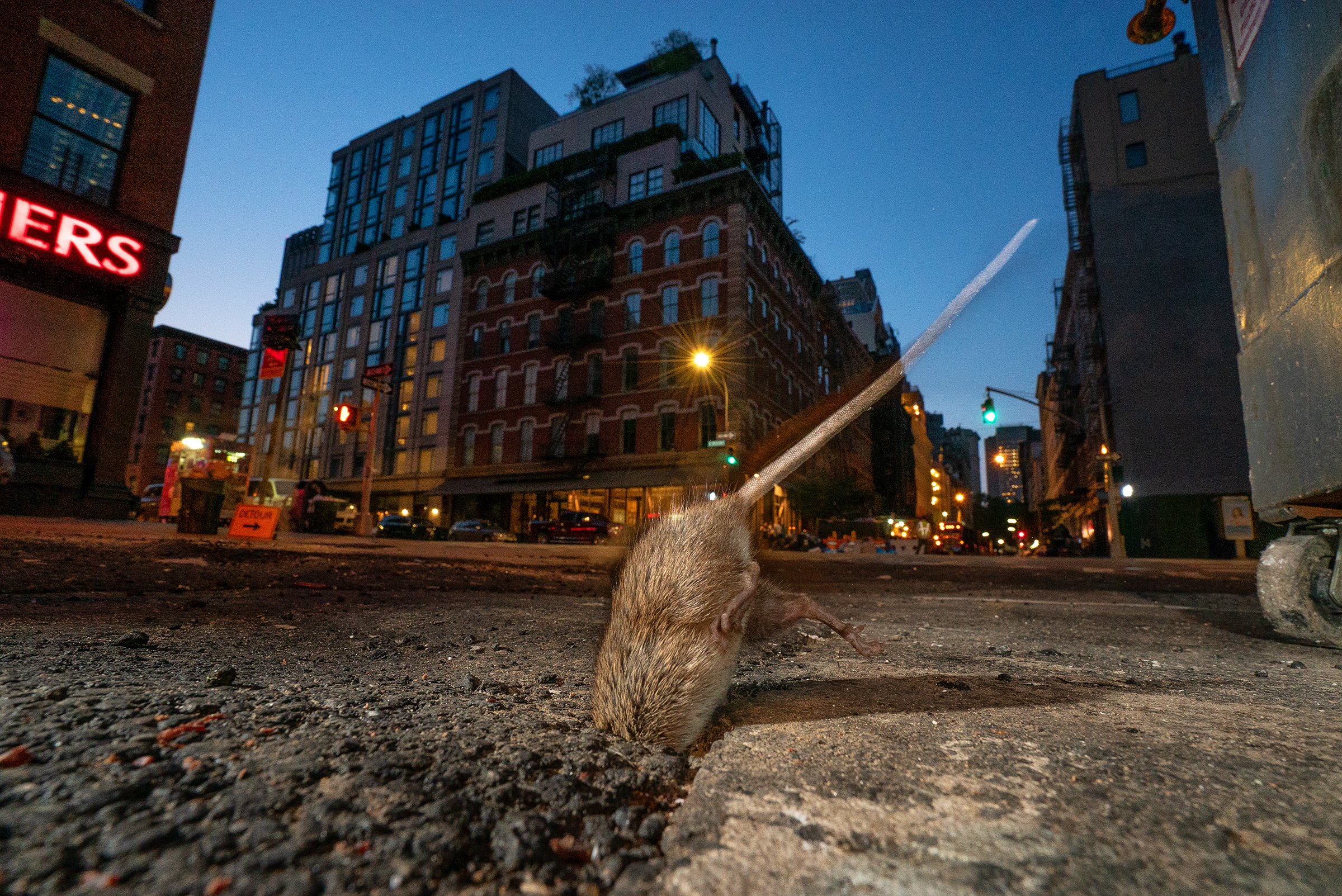Not every politician is willing to admit they owe their election to rats. But Laura Mikulski, city councilwoman for Ferndale, Michigan isn’t shy about attributing her political career—literally—to skeevy, long-tailed rodents.
Mikulski, who educated herself in all things rat control, is the co-founder of the Ferndale Rat Patrol. She created a citizens’ movement to accurately assess the local scope of its burgeoning rat problem, embrace less environmentally harmful methods of pest control, and even host a month-long census, called Traptoberfest, in which participants win gold-painted spring trap trophies for bringing in the most dead rats. “Nobody knows Laura Mikulski,” the councilwoman, who won election in 2019, says. “But they all love The Rat Lady.”
If Mikulski’s political path thus far sounds unlikely, it’s nothing compared to her next move: guide Ferndale as it embarks on its first experiment with rodent fertility. As in, birth control for rats.

In April, Ferndale will begin trialing one of the more innovative weapons in the anti-rat arsenal: a product, called Contrapest, that has the potential to change the way cities around the world address their own rat situations by limiting the rodents’ ability to reproduce. Senestech, the company that makes the plant-based product, claims it prevents the critters from reproducing for 45 days per dose, reducing populations humanely without posing danger to other animals or the environment. And thanks to another innovative discovery by a small Danish biotech startup that will allow a key ingredient to be grown in labs, it will soon be a lot more readily available.
As climate change, population growth and land-use changes increase conflicts between humans and wildlife around the world, contraceptives are proving a promising pest-control alternative to “traditional methods to mitigate these impacts, such as culling, that can can be ineffective, environmentally harmful, and often publicly opposed,” explains Giovanna Massei, director of the Botstiber Institute for Wildlife Fertility Control Europe. Already, contraceptives in different formats are being used to reduce deer populations in U.S. suburbs, monkeys in Thailand, and feral pigeons in Barcelona.

No one has invented tiny rat condoms yet, so ContraPest is an EPA-registered oral contraceptive that rats consume simply by eating it. It works via two active compounds, one of which induces a kind of menopause in females while the other, called triptolide, limits sperm production in males. Delivered cumulatively over time, the product has reduced populations by 95%, according to Senestech’s own research.
Senestech says its compound is non-toxic and poses no danger to other animals or the environment. And although rats must continue to consume it to maintain the contraceptive effects, according to Senestech CEO Joel Fruendt, uptake hasn’t been a problem. “It’s very sweet, so they love it,” he says. “It’s like a milkshake for rats.”
The world is going to need a lot of these milkshakes. Although it’s unclear whether actual populations increased during the pandemic or simply sightings of them, cities from Boston to Portland are reporting record numbers of complaints about the rodents. By December of 2022, the problem had grown so confounding in New York City that mayor Eric Adams posted a job announcement for a “highly motivated and somewhat bloodthirsty” rat czar. And the problem is not limited to the U.S.

In London–which has struggled with the critters since the outbreak of the Bubonic Plague in the 1600s—there is more than one rat for every five inhabitants. In Paris, the numbers are even higher: between 1.5 and 1.75 per resident. In Mumbai, city catchers kill 1,000 rats each night. And an astonishing 100 million rats are estimated to burrow beneath the streets of Mexico City.
Beyond their reviled reputation, rats also pose a serious threat to human health and infrastructure. They spread diseases like leptospirosis (which killed a record number of New Yorkers in 2019 and is spread primarily through contact with rat urine), decimate harvests, and destroy property. And as an invasive species in many parts of the world, they pose a grave threat to biodiversity.
Rat biology bears some of the blame. The average litter for the common Norway rat ranges from five to 12 pups. With females having three to six litters in their year-long lifetime, a single pair of rats breeding in ideal conditions can produce 15,000 descendants in a year.

But the rise of rats can’t all be chocked up to rodent randiness; humans, with their garbage bins that act like buffet lines and their sewer pipes that make such cozy homes, have also helped rats thrive.
“It’s one of the species that has benefitted from the success of humans,” says biologist Naia Morueta-Holme, professor of macroecology at the University of Copenhagen. “Besides being spread by humans from their native range in Asia, they benefit from human constructions—first granaries, then cities have provided food sources and perfect habitat for rats.”
Even the signature human invention of plastic has contributed, by making a lot more food accessible to rats now that trash is generally put out in flimsy bags rather than sturdy metal cans. And global warming brought on by humans has also boosted populations; warmer winters allow rats to breed during months that were previously too cold.
Against this rising army of rodents, most available weapons fall short ethically, environmentally, efficiently, or all of the above. Traps can be cruel—glue traps often leave the animal starving for days before dying, while rats caught in snap traps will chew off their own limbs to free themselves. Chemical poisons cause pain before death and are toxic to other animals who might ingest them, and their residue can contaminate soil and water. Rats learn to avoid bait that makes them sick and can even build up resistance to some rodenticides.

Contraception avoids those problems—though as a novel product targeting an especially unloved creature, Contrapest has a particular obstacle to overcome: blood thirst. Although rats are highly intelligent animals who can be trained to detect both cancer and landmines, they also have a long history of skeeving people out thanks to their associations with trash, sewers, and diseases going back to the Black Death. As the popularity of rat-control YouTubers (yes, there is such a thing) like Twin Home Exterminators and Shawn Webb attests, “people want to see dead rats,” says Senestech CEO Fruendt.
Until now, the labor and expense involved in attaining one of the product’s active ingredients had also been a challenge. Used in traditional Chinese medicine, triptolide is derived from a rare plant called Thunder God Vine that grows in the country’s mountains and is mostly harvested by hand. Each plant produces so little triptolide that, in the region, the substance is worth 15 times its weight in gold.
That’s where Danish biologist Johan Andersen-Ranberg comes in. He has figured out a way to get common yeast, injected with the proper genetic code, to grow triptolide. “It’s a bit like brewing beer,” he says. “You feed sugar to yeast, and you get this precious substance on the other side.”
Yet having discovered a way to produce the triptolide in the lab, Andersen-Ranberg realized he had no idea what to do with it. So, like any highly-trained scientist, he Googled it, and learned that Senestech had recently begun marketing its product based on natural triptolide for rat control. Together with business partner Jon Christensen, Andersen-Ranberg launched a startup called TriptoBio, and entered into a partnership with the American company. Now, while they wait for EPA registration for the lab-grown compound specifically, they’re scouting locations and working on how to scale up their triptolide-producing yeast.

Although he didn’t start his research with rat birth control in mind, the scientist is excited about the application. “I like that it’s a bigger problem that everyone can relate to. Rat pest control is kind of like sewers; sewer systems have probably done more to improve health in modern society than anything else but no one talks about them. This could have a similar impact.”
Senestech expects that the lab-grown version will allow it to guarantee supply as it ramps up production while reducing costs–important steps as it attempts a paradigm shift in pest control. Even so, challenges remain, especially in big cities.
When ContraPest was trialed in Washington, D.C. in 2019, it reduced camera-detected rat sightings by 90%, according to the company’s results. But according to a spokesman for the Department of Health, the district decided not to continue with the product “after the results proved inconclusive.”
Although the DOH declined to go into more detail, Daniel Neves, head biologist for the UK pest control company Inoculand has some ideas on why the substance may be less effective in urban settings than rural ones. As someone with many years of experience (and the horrifying stories of rats streaming up through the toilets of newly built homes to prove it), he knows that the key to controlling rodents is access.
“That product can be very efficient,” Neves says, “But if the rats don’t come to where it is, there will always be a reservoir of them. And the main problem with rats is that they live deep in the sewers where it is hard to get to them.”

Other experts have been thrilled with Contrapest. Wesley Parker, the co-owner of Parker Eco-Pest Control in Seattle, was initially skeptical about the product’s claims, but after partnering with a wildlife population management foundation called FYXX to run a study in Seattle’s Queen Anne neighborhood in spring 2022, her doubts were erased.
“It does require some patience, but the results speak for themselves,” Parker says. “Not only did we see the population go down by 90% in a matter of months, but we heard anecdotally from businesses adjacent to the test site that they’ve never been rodent-free until now.”
She’s convinced that the new technique is at least part of the future. “Birth control plus physically sealing up a structure will soon be the gold standard for eco-friendly rodent control.”
That’s certainly what Laura Makulski is hoping for when Ferndale starts its own ContraPest trial next month. Public support for the initiative is strong, despite the relatively high price tag (the pilot project will cost the city roughly $8,000 for a year’s supply).
“We have that support because we’ve educated people here so they want to do better, and the things that we’ve been doing–using normal rat poisons that kill our owls—that’s not doing better. We have to be smarter.”
More Must-Reads from TIME
- Cybersecurity Experts Are Sounding the Alarm on DOGE
- Meet the 2025 Women of the Year
- The Harsh Truth About Disability Inclusion
- Why Do More Young Adults Have Cancer?
- Colman Domingo Leads With Radical Love
- How to Get Better at Doing Things Alone
- Michelle Zauner Stares Down the Darkness
Contact us at letters@time.com
